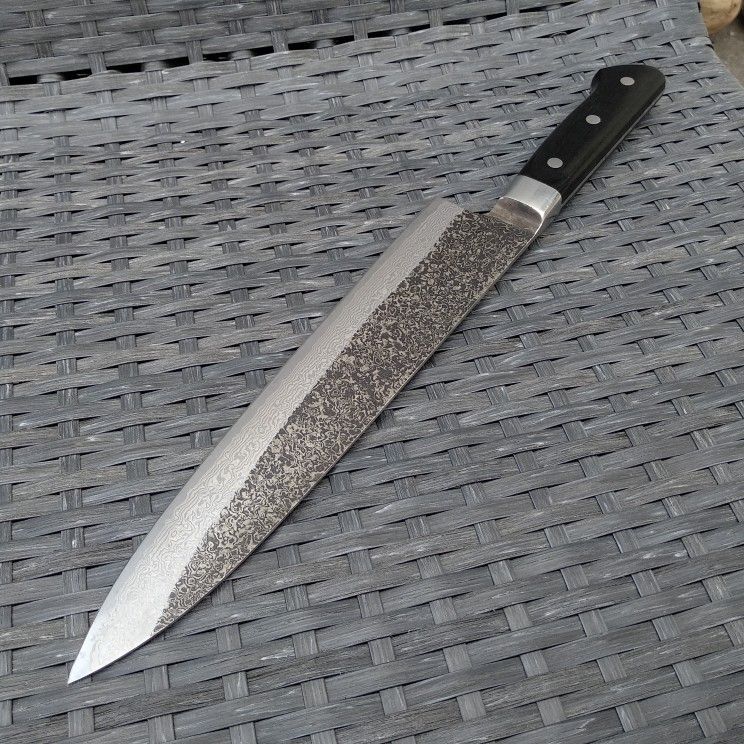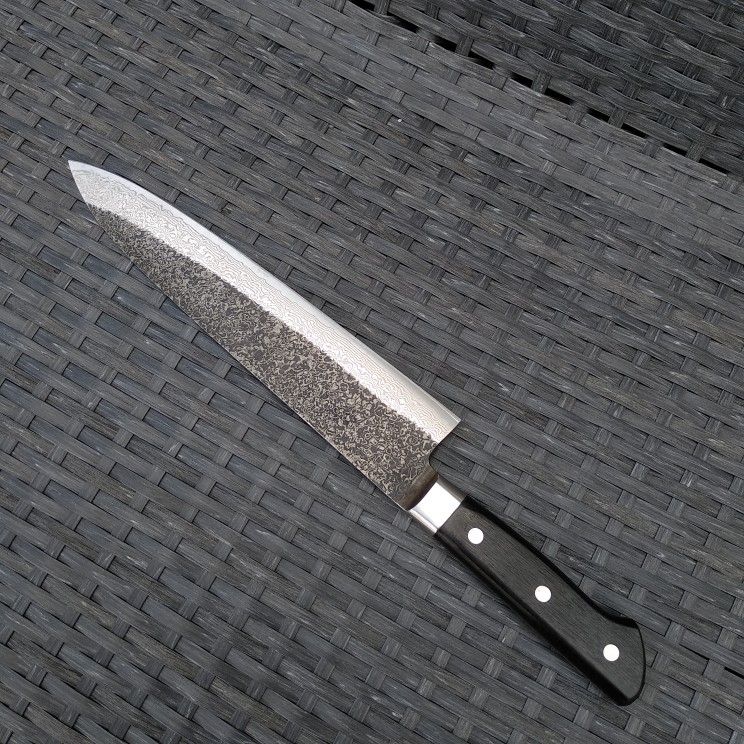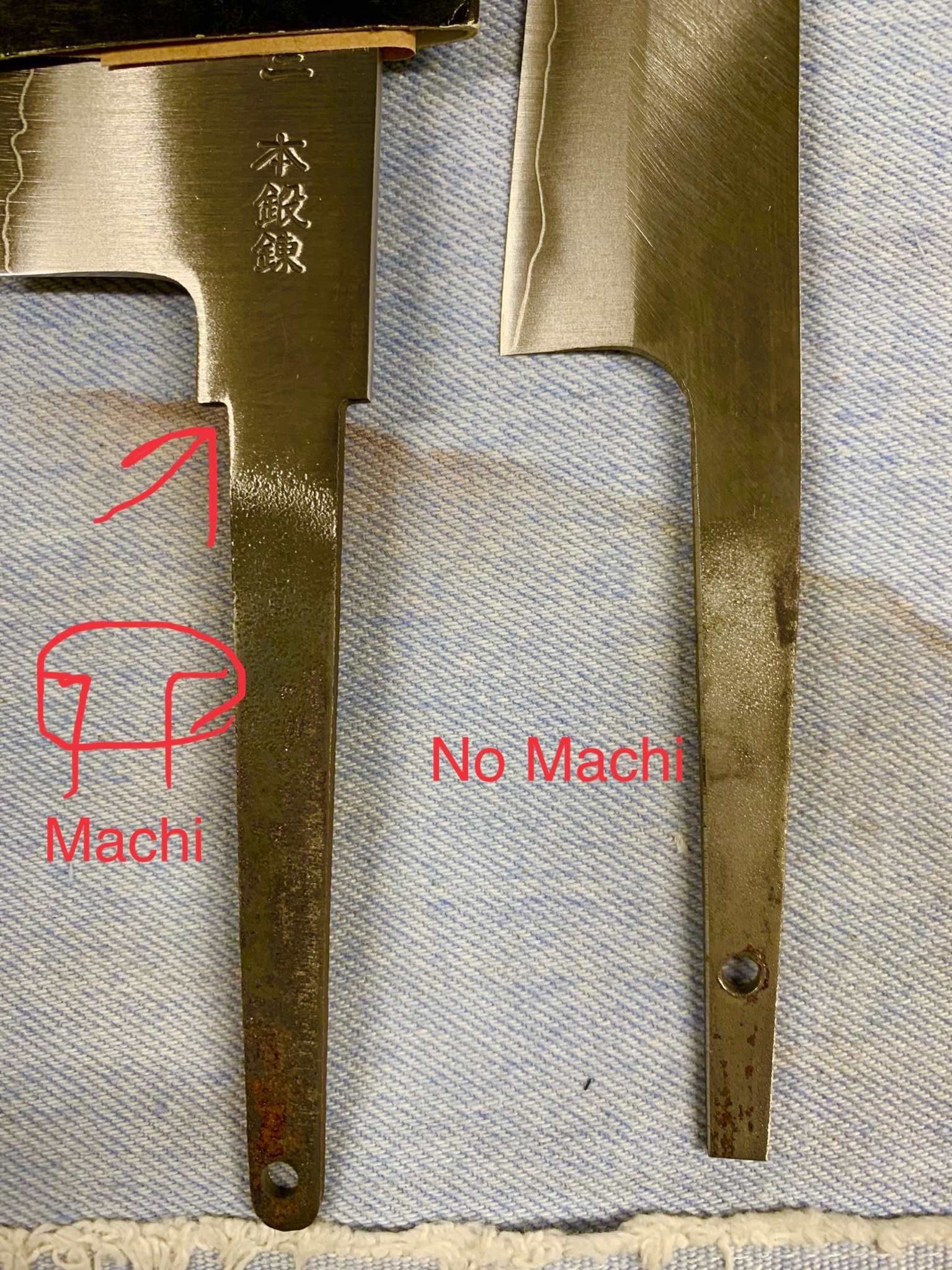'Mind the gap!'

Jon put it pretty well here
"I know that many on here do not like them, so i thought i would take some time to explain a bit about them. First, the biggest thing to know is that there are regional differences in aesthetics. Kanto tends to like large gaps, while kansai does not. However, most knife makers/retailers/wholesalers in japan will still leave them if it makes more sense to than not. However, on request from many us retailers, many wholesalers in japan have started installing the handles flush with the handle. So, the question becomes "why leave a gap?"
There are a few reasons the gaps are left... here are some of the top ones
-When the neck of the knife is short (which can happen for a variety of reasons or sometimes none at all), the spacing between the choil and the handle becomes important. This space should be large enough to fit about 80% of your middle finger when holding the knife in a pinch grip. Smaller than this will be too small and is uncomfortable to hold. Larger than this will be too loose and can make rotary control of the knife more difficult than it should be. 80% or so gives enough space for the finger to fit, but is tight enough that the finger is still in contact with the handle for rotational stability. Also, what i have just said is based on what one would expect for a gyuto. Ideal sizes will be different based on knife types, expected grips, intended customers, etc.
-Handle installation... This is not only for ease of installing handles in the traditional japanese way (which is easier than using epoxy, allows for easier handle replacement, and removal of handles for maintenance), but also allows for knife placement relative to the handle. Knives with no machi will have a spine that is significantly lower than the top of the handle for example. On significantly harder woods (like ebony), the tang with the machi makes installation significantly easier with less chance of the wood cracking (which can be a problem with ebony).
Here are the top reasons i hear for people not wanting machi gaps...
-Food gets stuck. I've used knives with machi gaps for many years, both at home and in professional kitchens. This area is almost always covered with your hand and is not generally at risk for food getting stuck. If food does get in there, its a long way from being stuck, and comes out with general knife cleaning. If you find food accumulating, the chances are you may not be taking care of your knife well enough in my opinion. I've seen a wide number of knives from a wide number of people. I see just as many very dirty knives with no machi as i do dirty ones with a machi. I would venture to say, a dirty knife is more a function of the user than the knife design.
-It catches on your finger. I've found this to be the case with very large machi gaps or on some lower end knives that have machis that extend beyond the handle in width (or height depending on how you think about it). However, after significant testing, i've found that on knives with normal sized machi gaps, if this turns into a problem, it is most often the result of the use of an improper grip. When knives are held properly, your fingers dont really make contact with this area in a way than can catch.
-And of course, some people just dont like the way it looks... actually, this one is the reason i understand best.
The reason i say this, is that sometimes i ask makers to reduce or remove the machi gaps based on customer requests. However, i have a stipulation i have discussed with them. I would prefer that if and when they reduce the gap, they do it to an extent that does not sacrifice the ability to grip and use the knife well.
Anyways, hope this helps make sense of this to some of you.
-Jon"
I think I've read its also a regional thing. Tokyo-style to have a gap......
Interest piqued on looks alone.


























